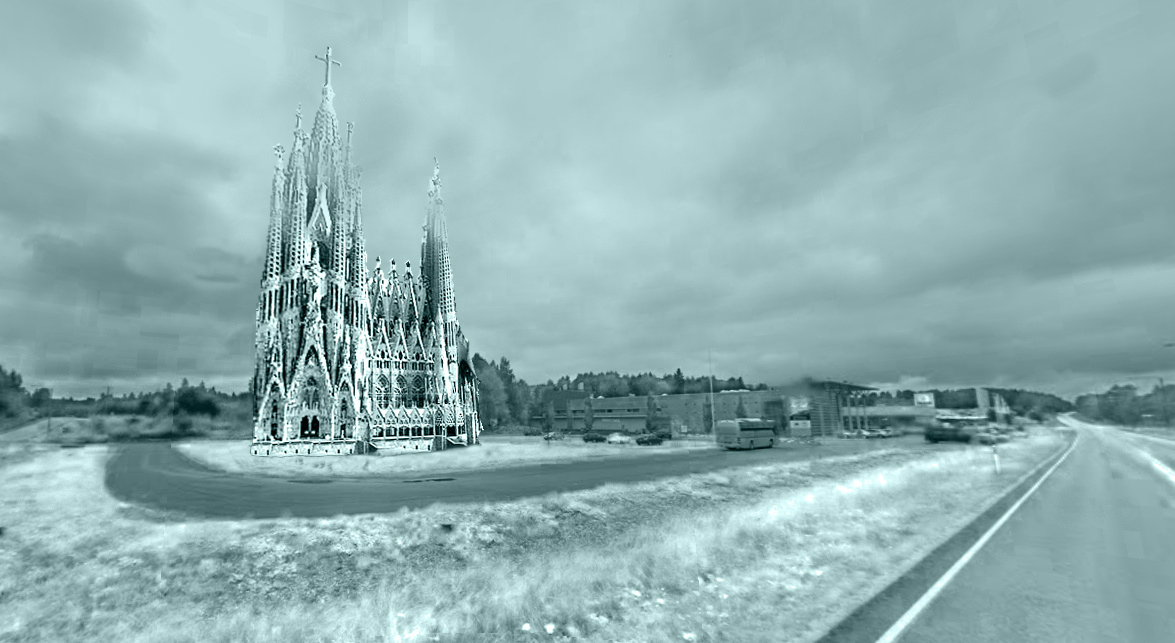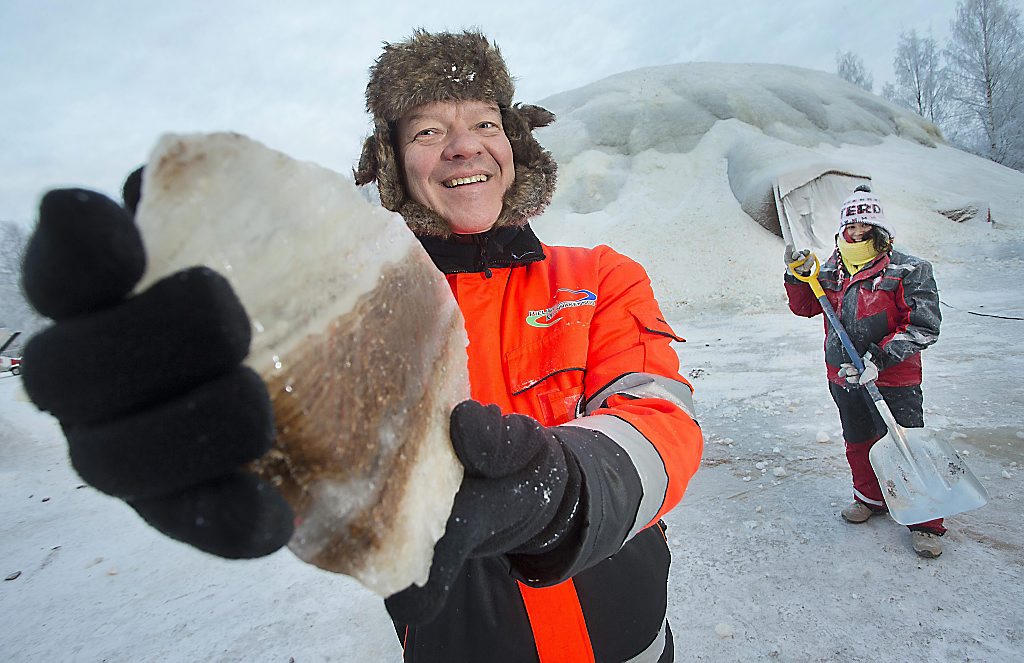Credit: Pykrete Dome team. Song: Youngblood Hawke - Stars (Hold On)
This next winter, another Eindhoven team wants to top that. They are going to make a 1:4 scale copy of Barcelona's Sagrada Familia in the town of Juuka , 40 meters high, in just three weeks.
“We could have just decided to build another, even larger, dome,” Eindhoven University of Technology (TU/e) lecturer and project leader Arno Pronk explains. “But in building terms the Sagrada Familia is a much bigger challenge. And of course it’s very recognizable.”
He also thinks the timing will be tougher than last year, partly because the ice basilica is a lot more complex. Last year the building work was delayed by one‑and‑a‑half weeks because there was no frost in Juuka (Finland) – the weather hadn’t been so mild at that time of the year for the preceding 146 years. “If the weather is the same as last year we’ll never be able to do it,” laughs Pronk.
The team will leave on 28 December, and the opening is scheduled for 17 January 2015.

Photo montage giving an impression of how the ice basilica will look. Photomontage: Eindhoven University of Technology
Pronk and the two students who are leading the project together with him, Teun Verberne and Jordy Kern, want to show that pykrete – ice reinforced with wood fibers - is an excellent building material for temporary structures. “You can use it to build thin-walled temporary structures that are safe and low-cost,” says Pronk. “Our technique enables environment-friendly applications such as seasonal storage in agriculture, the offshore industry and expeditions, as well as for recreational facilities like ice hotels.”

Arno Pronk and Pyrkete. Photo: Bart van Overbeeke.
That’s why the team are focusing mainly on the structural aspects of the building. “The structures in the work of the architect Gaudí are scientifically the most interesting”, Pronk explains. “And although the ice building will have the same shape as the Sagrada Familia, it won’t have the same decorative exterior.”
The 50-strong team will build the ice basilica by spraying thin layers of water and snow onto large, inflated molds and allowing it to freeze. They first spray a layer of snow, followed by a layer of water containing 10% sawdust. That pyrkete mixture is immediately absorbed by the snow and then freezes. The wood fiber content makes the material three times as strong as normal ice, and it’s also a lot tougher.
Snow cannon
Once a strong layer has formed, the builders allow the molds to empty and then remove them. Because the structure is more complex than last year’s dome, they have to monitor the quality of the building material even more closely. It’s also a challenge to pump the pykrete up and spray it at a height of 40 meters. This time the builders will take a snow cannon with them to avoid a repeat of the snow shortage experienced last year. They plan to work in shifts, round the clock, in the freezing cold, because any longer interruptions would cause the equipment to freeze up.
For Teun Verberne and Jordy Kern this project is also their graduation project. They already visited Barcelona earlier this year to study the real Sagrada Familia, and they’re in contact with the basilica’s project architects Mark Burry and Jordi Fauli.
Source: Eindhoven University of Technology






Comments